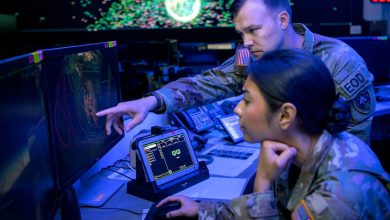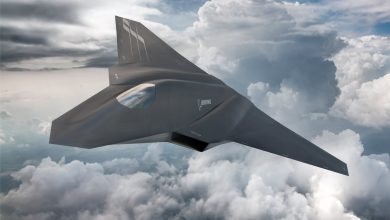Kratos’ Erinyes test vehicle logs hypersonic speeds on first flight

A hypersonic test bed built by Kratos took its first flight last month, launching experiments for the Missile Defense Agency and hitting speeds above Mach 5.
MDA announced the successful flight of its first Hypersonic Testbed, HTB-1, June 14, which took off from Wallops Island in Virginia. Not only did it provide a high-speed test platform for the agency, but it allowed its two missile tracking satellites — launched in February and designed to detect advanced threats — to catch their first tracks of a hypersonic vehicle.
While MDA did not provide details about which company built the system, Kratos confirmed last week that its Erinyes vehicle — named after the Greek goddess of vengeance — flew the mission.
The company developed Erinyes in three years for under $15 million with a mix of internal investment and congressional funding. According to Josh Peterson, senior vice president for space and missile defense systems at Kratos, the company built the system largely in response to concerns within the Defense Department that its existing hypersonic test infrastructure was overtaxed and not well positioned to meet demand.
Now, Erinyes is drawing significant attention from other potential customers within the Defense Department, Peterson and Dave Carter, president of Kratos’ defense and rocket support systems division, told C4ISRNET in a July 2 interview.
“There’s been a lot of interest from numerous parties,” Carter said.
Those possible customers include the Pentagon Test Resource Management Center’s Multi-Service Advanced Capability Hypersonic Test Bed, or MACH-TB. The program relies on vehicles like Rocket Lab’s HASTE and Stratolaunch’s Talon-A to test components and subsystems in a realistic flight environment that mimics the conditions these systems might face as they fly and maneuver at Mach 5 and higher speeds.
Kratos is already involved with MACH-TB as a subcontractor, providing sounding rockets to the program’s prime contractor Leidos. Carter highlighted the vehicle’s affordability — a single Erinyes costs around $5 million, not including the rocket motor that powers it or any other customer-specific requirements — and said he expects it to play a key role in the program moving forward, potentially flying MACH-TB experiments in 2025 or 2026.
In the meantime, the company is eyeing its second flight for MDA, which is slated for later this year.
Beyond Erinyes, Kratos’ hypersonic development work includes a range of services for commercial, DOD and classified national security customers. The company started out using its sounding rocket technology to provide targeting capabilities to MDA and the Naval Surface Warfare Center in support of its Aegis Ballistic Missile Defense System.
It has since supported various hypersonic experiments and is now on contract with the Air Force Research Laboratory for its Mayhem program, which is developing a hypersonic ISR and strike platform.
Kratos is also developing a line of rocket motors called Zeus, designed to provide greater thrust and range at a lower cost. The company sees the system as a response to a need within the defense and commercial markets for affordable launch vehicle propulsion.
Zeus will fly this year on an undisclosed mission, Carter said, and will eventually be a propulsion option for Erinyes.
“We think it will provide some additional capabilities for both our target missions and probably even more capability for our Erinyes vehicle,” he said. “It’ll give it the additional horsepower to do more sophisticated things.”
Courtney Albon is C4ISRNET’s space and emerging technology reporter. She has covered the U.S. military since 2012, with a focus on the Air Force and Space Force. She has reported on some of the Defense Department’s most significant acquisition, budget and policy challenges.







